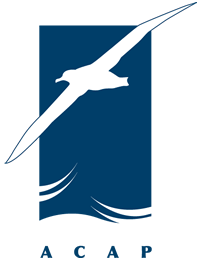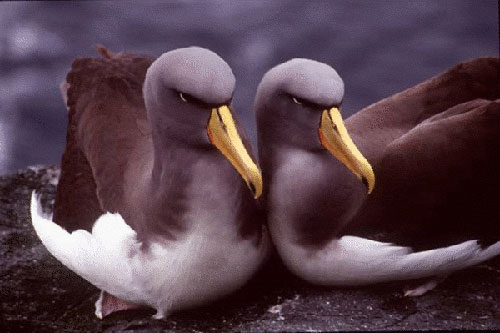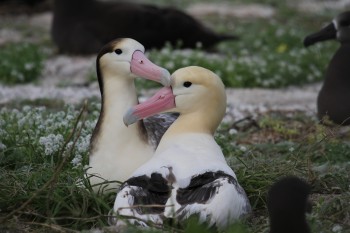The Short-tailed Albatross Phoebastria albatrus pair breeding on Midway Atoll’s Eastern Island for the third time successfully hatched its egg on 9 January (click here).
“A year ago last fall, the male returned and patiently waited but the female returned too late in the season and did not lay an egg,” noted refuge biologist Pete Leary. "We were therefore thrilled when this past fall a remote camera technician sighted the female reuniting with the patiently waiting male that appreared the week before".
“The nest site is continuously monitored by refuge staff via a remote camera controlled on nearby Sand Island,” noted refuge visitor services manager, Ann Bell. “For the first time we [are] able to post on-line video clips of the parents caring for the chick.”
Watch a video clip of the new chick.

Midway's male Short-tailed Albatross incubating behind two model birds in November 2010
Photograph by John Klavitter
The 27 year-old male and 11 year-old female first met six years ago near their current nest site. “This pair raised their first chick in 2011 which amazed the scientific community by successfully fledging despite large storm waves in January and the March 2011 Japanese tsunami that washed the young bird from its nest site twice before it was able to fly.”
Click here for more photos and video clips of Midway’s Short-tailed Albatrosses and here for earlier news of the 2013/14 breeding attempt.
The Midway Atoll National Wildlife Refuge is part of the Papahānaumokuākea Marine National Monument and is the western-most atoll in the USA’s Northwestern Hawaiian Islands.
John Cooper, ACAP Information Officer, 13 January 2014

 English
English  Français
Français  Español
Español 



